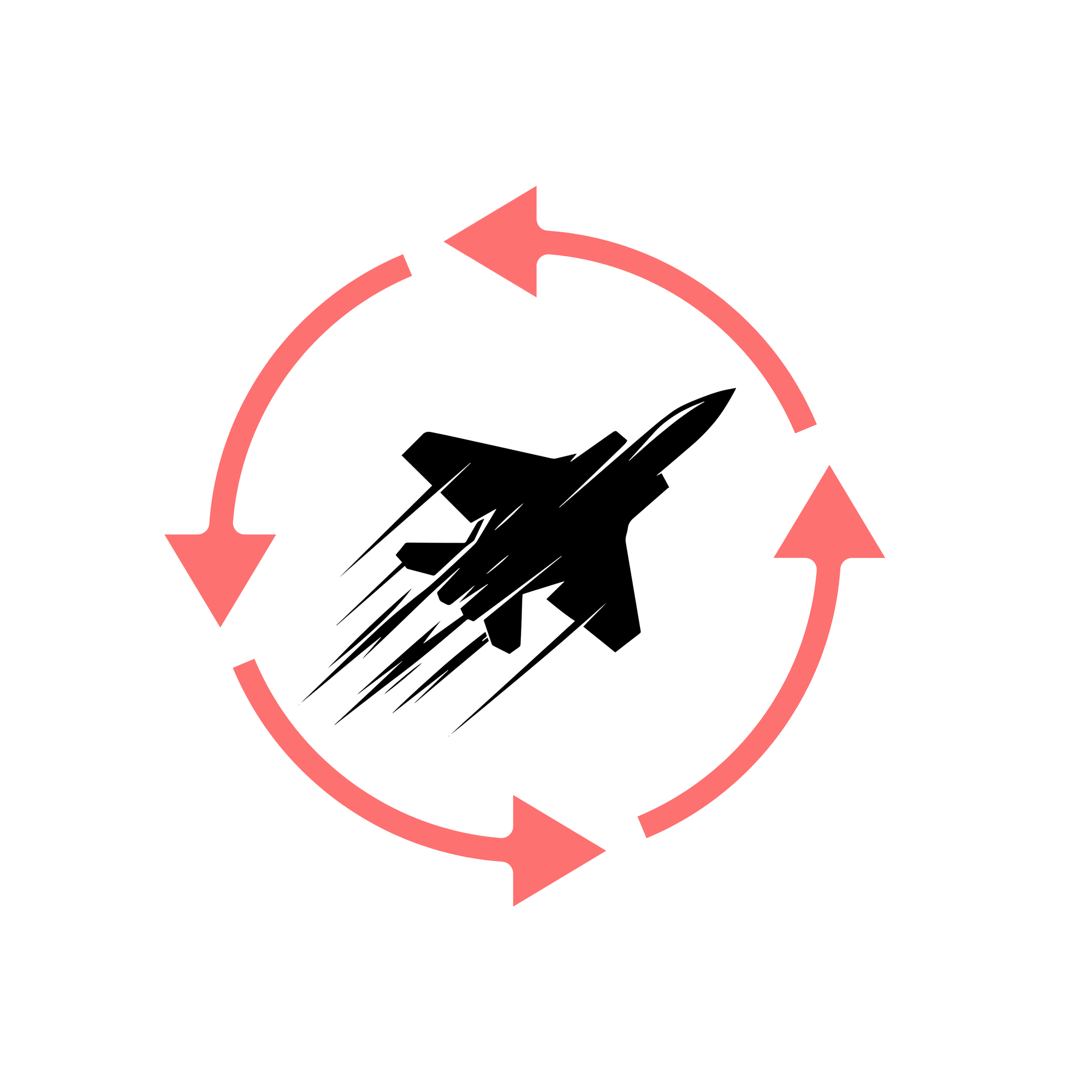Can we learn to decide from fighter pilots? I think so. Fighter pilots face some of the most challenging decision-making environments, where all the factors that contribute to bad decision-making occur simultaneously:
- Little or no time to decide
- High-stakes and existential risk to life of their own and colleagues
- Risk to their nation, its civilians and its infrastructure
- Financial risk of loss of equipment or military assets of the nation
How do fighter pilots decide in such scenarios?
And if fighter pilots are engaging each other, which one wins?
Is it always the pilot with a better aircraft, or is there something else that determines the pilot that wins (and survives) ?
An air force pilot and teacher called John Boyd answered that question a few decades ago, with a fascinating model for updating reality in the middle of a dogfight, whether in the air or in your work, market or profession.
What is this model that every fighter pilot in the world uses? Let's find out.

How a Fighter Pilot Changed the Way the World Thinks About Decision-Making
Colonel John R. Boyd, USAF, through a series of evolving briefings, evolved a model called the OODA Loop. Boyd:
- Was a jet pilot, engineer, systems theorist, and historian.
- Built the Energy-Maneuverability Theory for jet fighters.
- Literally designed the F-15 and inspired the F-16.
- Created A Discourse on Winning and Losing - his strategic magnum opus.
Boyd emphasized:
“Machines don’t fight wars. Terrain doesn’t fight wars. Humans fight wars. And they use their minds”.
The Fighter Pilot Who Outthought the Air Force
The OODA Loop was developed by Colonel John Boyd, a maverick U.S. Air Force fighter pilot and military strategist in the 1950s and 60s.
Boyd was known as 'Forty Second Boyd' because he had a standing bet that in any mock air-to-air combat, he could defeat any opponent within 40 seconds - from any disadvantageous position.
His insights weren’t just physical. They were cognitive.
What made him lethal wasn’t just speed or skill - it was mental agility.
He understood that in high-speed combat, the pilot who could process reality, adapt, and act faster would win - not necessarily the one with the faster jet.
From this evolved one of the most important strategic frameworks in modern history:
The OODA Loop: Observe. Orient. Decide. Act.
Every decision we make - whether in war, business, investing, or daily life - passes through this loop:
- Observe – What is happening? What data, signals, and context are available?
- Orient – What does this mean to me? What mental models, biases, knowledge, and intuition am I bringing?
- Decide – Based on the above, what should I do?
- Act – Execute the decision.
The Real Power: Orientation
While all four steps are important, Boyd stressed that Orientation is the linchpin. Why?
Because orientation includes:
- Your culture
- Your genetic heritage
- Your experiences
- Your training
- Your mental models
- Your analysis and synthesis abilities
It’s the lens through which you interpret reality.
Two people can see the same data and make completely different decisions. That’s Orientation at work.
The wrong orientation leads to wrong decisions - no matter how good your data is.
Speed vs. Tempo: Why 'Loop Faster' Doesn’t Just Mean 'Move Faster'
One common misconception is that the OODA loop is about acting quickly. Not exactly.
It’s about looping faster than your opponent in a way that disorients them.
You’re creating decision fatigue in their system. You are reshaping the reality they’re reacting to.
This is what Boyd called:
“Getting inside their decision cycle.”
In war: you’re moving faster than the enemy’s ability to respond.
In business: you’re innovating faster than your competitor’s ability to adapt.
In life: you’re evolving faster than the challenges you face.
This creates confusion, paralysis, and defeat in systems that loop slower.
The result: you short-circuit the competitor, enemy or opponent's decision-making ability itself.
In other words, as we say in India, you blow their fuse.
How To Use The OODA Loop In The Fog Of War
“In war, everything is simple. But the simplest thing is difficult.” – Carl von Clausewitz
The concept of 'Fog of War' is one of the most powerful mental models in both military strategy and decision-making.
What Is The Fog Of War?
The Fog of War describes the inherent confusion, uncertainty, and chaos that surrounds decision-making in any high-stakes environment.
In literal war, it's about:
- Not knowing enemy position
- Misreading intent
- Acting with partial or conflicting data
And in business, investing, education, or life, it's about:
- Making career moves with incomplete information
- Launching a product without knowing full market reaction
- Investing when you think the market is rational
- Writing exams with unclear questions or shifting goalposts
How You Can Use The OODA Loop In The Fog of War
1. Assume You Are Missing Information
Operate from humility. Every decision is made with partial data. Accept it.
2. Build Probabilistic Maps
Think in branches and bets. What’s likely? What’s survivable? What has the most asymmetric upside?
3. Design for Optionality
Don’t commit to plans that can’t bend. Build projects and careers that can pivot.
4. Master the OODA Loop
It’s not a one-time cycle. It’s a loop. The faster and clearer you move through it, the more likely you are to win in uncertainty.
Let’s Break It Down:
- Observe → What is actually happening right now? What new signals or facts have emerged?
- Orient → How does this fit into my mental map? What biases or blind spots might be shaping what I see?
- Decide → Based on limited time and imperfect info, what’s the best move?
- Act → Take decisive action. Then return to Observe.
For Example:
- In the Indo-Pak conflict: Satellite images, human intel, and digital surveillance = Observe. Interpreting that data in real-time = Orient. Choosing whether to strike = Decide. Launching Operation Sindoor = Act.
- For an Entrepreneur: Users drop in week 3 of onboarding = Observe. It's mostly first-time app users = Orient. Change UI + rework user's flow = Decide. Ship and A/B test = Act. Repeat the loop weekly.
- For an Investor: Earnings report contradicts street expectations = Observe. Stock down 9% pre-market = Orient. Thesis intact long-term? Yes = Decide. Double down = Act.
The OODA Loop trains you to act faster than your competitors - but not recklessly. It’s about clarity under chaos.
5. Move Slowly When It Feels Urgent
When everything feels urgent, pause. Most mistakes in the fog are made by acting too fast, too surely.
When others panic, the clear thinker waits.
What Does It Mean to Get Into The Enemy’s OODA Loop?
To 'get inside someone’s OODA loop' means to move through your own Observe–Orient–Decide–Act cycle faster and more fluidly than your opponent or counterpart - so much so that you begin to shape their reality before they can process it.
You're not just reacting quicker. You're changing the situation faster than they can comprehend it.
You create a kind of temporal dislocation - they're always a step behind, trying to make sense of a world that's already moved on.
It’s a form of cognitive disruption created by psychological and time pressure.
It leads to:
- Confusion
- Hesitation
- Paralysis
- Mistakes
- Collapse of morale or decision-making ability
It goes to the pilot who can:
- Process information more efficiently, and
- Adapt to the adversary’s movements more quickly.
A Samridh's Library Checklist to Check If You’re Getting Inside A Competitor’s Loop:
'To survive, survive on your own terms, or improve your capacity for independent action.' - John Boyd
- Are you acting before others can even interpret the situation?
- Do your moves surprise or confuse your competition?
- Are you setting the rhythm of engagement - professionally or personally?
- Are others reacting to your decisions instead of leading with their own?
- Have you updated your mental model faster than others?
Above all, ask:
How can I collapse the other’s loop before they complete it?
Final Thought:
'The essence of winning and losing lies in our ability to shape the environment faster than the enemy can adapt, while denying them the same.' - John Boyd
Jai Hind. 🇮🇳
Listen to The Samridh's Library Podcast
Want to be notified when new ideas are released? Follow The Samridh's Library Podcast on ᯤ Spotify or Apple Podcasts to be notified automatically when a new episode is up.



